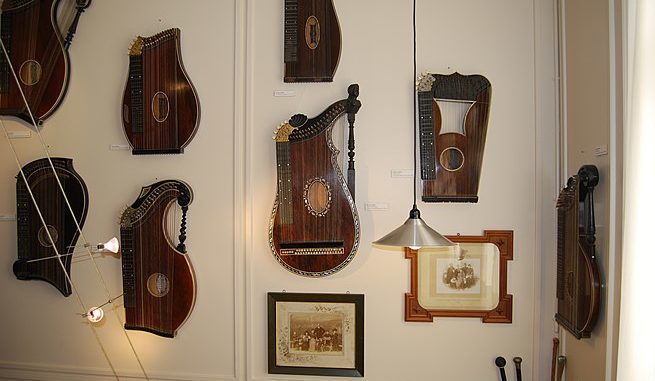
When it comes to stringed instruments, there are many different types, each with their own unique sound and style. Two such instruments that are often confused are the zither and the lute. While these instruments share some similarities, they are distinct from one another in several key ways.

What is the difference between a Zither and a Lute?
Firstly, let’s define what a zither is. A zither is a stringed instrument that does not have a neck or fingerboard. The strings are stretched over a flat wooden soundboard and the player plucks or strums the strings while holding the instrument on their lap or table. Some examples of zithers include the Chinese guzheng, the Japanese koto, and the German concert zither.
On the other hand, a lute is a stringed instrument that has a neck and a rounded back. The strings are stretched over the soundboard and are plucked by the player. The lute has been around for centuries and has been used in many different types of music, including medieval, Renaissance, and Baroque.
So, what are the main differences between a zither and a lute?
The first and most obvious difference is the shape of the instrument. A zither has a flat, rectangular shape, while a lute has a rounded, pear-shaped body. The shape of the instrument affects the way it produces sound, with the rounded shape of the lute allowing for a more resonant, full-bodied sound.
Another key difference is the way the strings are played. On a zither, the player usually plucks the strings with their fingers or with a plectrum, while on a lute, the player plucks the strings with their fingers. This difference in playing technique can result in a different sound quality, with the lute allowing for a greater degree of control over the sound.
The number of strings is also a difference between the two instruments. A zither typically has fewer strings than a lute, with some zithers having as few as 5 or 6 strings and others having as many as 37 or more. A lute, on the other hand, usually has 6 or more strings. The additional strings on a lute allow for a wider range of notes and a more complex sound.
The tuning of the strings is also different between the two instruments. Zithers are typically tuned in a diatonic scale, meaning that the strings are tuned to a specific sequence of notes. Lutes, on the other hand, are often tuned in a chromatic scale, which allows for a greater degree of musical versatility.
Finally, the history and cultural significance of the two instruments differ. The lute has a long and rich history, dating back to ancient times and being used in many different types of music. In contrast, the zither is often associated with specific cultures, such as Chinese or German music, and has a more limited history.
In conclusion, while the zither and the lute share some similarities in terms of being stringed instruments that are played by plucking the strings, they are distinct from one another in several key ways. The shape, playing technique, number of strings, tuning, and cultural significance of the two instruments all set them apart from one another. Whether you are a musician or simply interested in the history and development of musical instruments, understanding the differences between the zither and the lute can help deepen your appreciation and understanding of these fascinating instruments.
More Dulcimer Articles
Finger Positions on Mountain Dulcimer
Dulcimer Clubs and Groups USA
What is a Duclimer?
What is a Dulcimer Made From?
Contemporary Dulcimer Makers
Dulcimer Tabs
